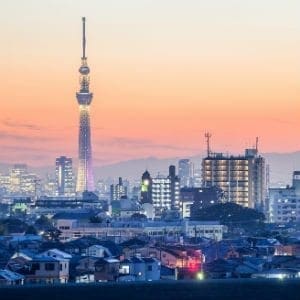 In HavanaÕs Parque Central, shady stone benches and graceful palm trees beckon to mojito-sipping tourists and locals gathering to shoot the breeze.
In HavanaÕs Parque Central, shady stone benches and graceful palm trees beckon to mojito-sipping tourists and locals gathering to shoot the breeze.
The gathering spot, in the center of town, is surrounded by horse-drawn carriages and long lines of colorful finned-and-chromed 1950s cars. But more utilitarian vehicles have recently begun circling the square: construction equipment transforming old buildings into luxury hotels.
As CubaÕs relationship with the United States grows warmer, real estate redevelopment is heating up, too.
ÒSo many old buildings sat vacant for years with signs saying they were soon to be converted into hotels,Ó said Belmont Freeman, a Cuban-American architect based in New York. ÒNow I actually see cranes on construction sites. Cuban bureaucracy is easing up, and foreign hotel developers are finally finding ways to move these projects forward.Ó
President Ral CastroÕs loosening restrictions on private enterprise, improving relations with the United States and financial necessity Ñ CubaÕs gross domestic product shrank in 2016, for the first time in over 20 years, according to official figures Ñ have fueled rapid change in many areas.
And several obstacles lie between the pent-up demand and a successful liftoff of CubaÕs luxury hotels. Utilities are not always reliable, poverty is widespread and visible, and even getting ingredients for restaurant-quality meals can be dicey.
But with Cuba suddenly an option for Americans exploring a culture kept off-limits for decades, the hospitality industry in particular has been supercharged. Over four million tourists visited in 2016, up 13 percent from the previous year, according to the Cuban Ministry of Tourism. Among those visitors were over 614,000 Americans, up 34 percent from the year before.
Leading the wave of new luxury hotels is the 246-room Gran Hotel Manzana Kempinski La Habana, which stands in a restored European-style shopping arcade that stretches for a block. On the other side of Parque Central is the Hotel Inglaterra, which opened in 1875 and had Winston Churchill as one of its guests. Within shouting distance are several other luxury hotels managed by the French group Accor and Iberostar of Spain.
Although the Cuban government owns all hotels in the country, heavy hitters in the luxury hotel world will help manage many of them. The Manzana, which is scheduled to open in early June, is financed by the Cuban state company Almest Investments and co-managed by the Swiss luxury hotelier Kempinski and the Gaviota Group of Cuba. The Inglaterra will be managed by Marriott International and is set to open in December 2019.
Because United States regulations on visiting Cuba have not been completely relaxed, the full deluge of American visitors has not yet arrived. Instead of declaring themselves tourists, they must come under the auspices of one of 12 categories like Òeducational activities,Ó which include interactions with Cuban people.
Former President Barack ObamaÕs visit to Cuba in 2016 paved the way for many of the changes in travel and hospitality. Priceline Group, an American company, received authorization afterward to allow travelers to book rooms directly through its Booking.com website, and Starwood Hotels and Resorts became the first American hotel company to enter Cuba in nearly 60 years. Starwood received permission to operate three hotels, including the Inglaterra.
StarwoodÕs first hotel in Cuba, a state hotel rebranded as Four Points by Sheraton Havana, opened in June 2016 in the Miramar district of Havana, popular with diplomats and business travelers, about eight miles southwest of the Old Town. Last year, Starwood was acquired by Marriott International, which will now manage the former Starwood hotels. Marriott had also been authorized to manage properties in Cuba.
But lengthy delays have tripped up many of the projects. Navigating shortages Ñ Cuba imports 70 to 80 percent of its food, according to the World Food Program Ñ frequent electricity and internet outages, and a decrepit water and sewage system are just some of the headaches for hotels trying to maintain standards. And the area near Parque Central and much of Havana has been overtaken by poverty since the Cuban Revolution in the 1950s, creating an uncomfortable juxtaposition between struggling locals and wealthy visitors.
ÒPeople are watching the Manzana closely,Ó said John Kavulich, President of the US-Cuba Trade and Economic Council. ÒThere is a tremendous amount of pressure to maintain the Kempinski experience, and that will be difficult in Cuba.Ó
Like many buildings in Havana, the Gran Hotel Manzana Ñ originally the Manzana de Gmez Ñ has a storied past. Built between 1890 and 1918, the shopping arcade housed high-end clothing boutiques, two theaters, restaurants, a skating rink and a shooting range. After the revolution, some stores remained on the first floor, while the other floors were taken over by the government for offices and schools. But in recent years, the building Ñ like many others in Cuba Ñ fell into disrepair.
In 2012, the French construction company Bouygues Btiment International started renovations, and in 2014 Kempinski joined the project. Now the hotel has 18-foot ceilings, French windows and abundant Art Deco-style mirrors. The design plays up HavanaÕs history with elements like the turquoise-and-gold Constante Bar, named after the bartender who came up with the Hemingway Daiquiri.
The ManzanaÕs rooftop terrace and swimming pool looks out at the Capitolio, a national government From the ConstanteÕs windows, guests can see El Floridita, one of HemingwayÕs local watering holes (and where the drink was created). Rooms range in size from 430 to 1,615 square feet and will cost from $370 to $660 per night, according to Alessandro Benedetti, a director of KempinskiÕs sales and marketing department.
Five stories tall, the Manzana also has a rooftop terrace and swimming pool that offers views of the Great Theater of Havana Alicia Alonso, the National MuseumÕs Palace of Fine Arts and the Capitolio, a national government building that resembles the Capitol in Washington, though its architect is said to have modeled it on the Panthon in Paris.
The top floor also has a fitness area and spa that cover over 10,000 square feet. From the windows in the massage room, drying clothes can also be seen hanging from the broken windows of crumbling buildings nearby. This region of the city has been nicknamed Òlas sbanas blancas,Ó or Òthe white sheets,Ó for the laundry frequently seen fluttering in the breeze.
Indeed, the building boom is also bringing into sharper relief the disparity between visitors and the average Cuban. Many Cubans work for the state and earn the equivalent of $25 to $30 a month. The ceiling on state employeesÕ salaries has been a challenge when hiring hospitality staff for these new luxury hotels in Havana.
While it remains to be seen how tightly it will control private enterprise, the Cuban government is betting that tourism will help solve its economic woes. In 2016, the government declared a goal of 10 million visitors by 2030.
The government is looking for new growth as the Cuban economy shrank 0.9 percent in 2016, hurt by the oil crisis in Venezuela, a key trading partner.
The challenge will be avoiding the ÒCancn-ificationÓ of Cuba, said the architect and urban planner Miguel Coyula, referring to the resort area in Mexico that is a particularly popular destination for students on spring break.
ÒWith its culture, history and architecture, Cuba has more than just beach and sun,Ó said Mr Coyula. ÒHavanaÕs infrastructure is under great pressure already. Millions of tourists looking for rumba and mojitos arenÕt going to help that.Ó


















